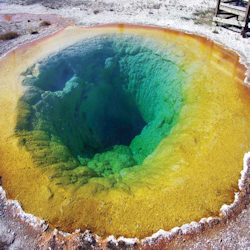

Blue-green algae, also called cyanobacteria, any of a large, heterogeneous group of prokaryotic, principally photosynthetic organisms. Cyanobacteria resemble the eukaryotic algae in many ways, including morphological characteristics and ecological niches, and were at one time treated as algae, hence the common name of blue-green algae. Algae have since been reclassified as protists, and the prokaryotic nature of the blue-green algae has caused them to be classified with bacteria in the prokaryotic kingdom Monera.